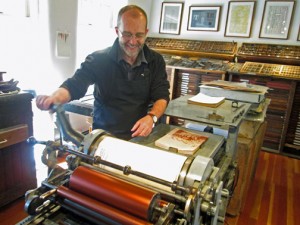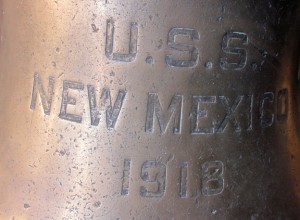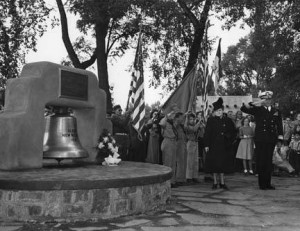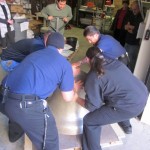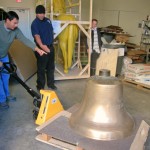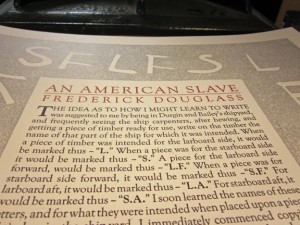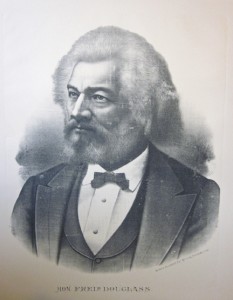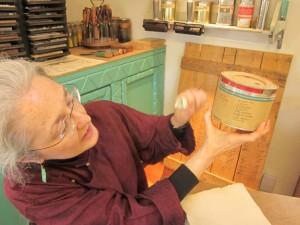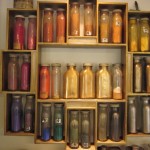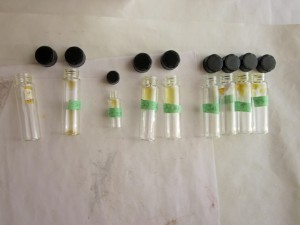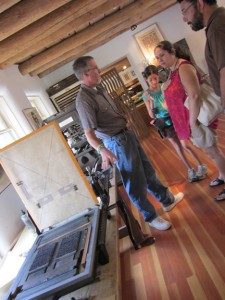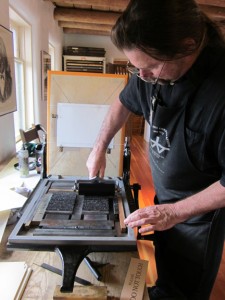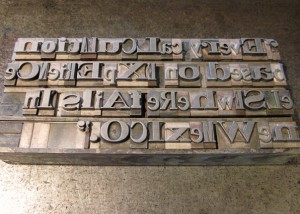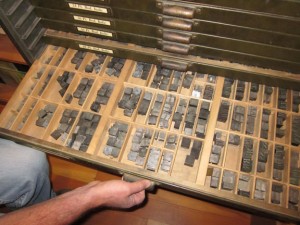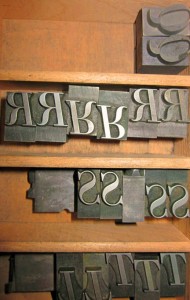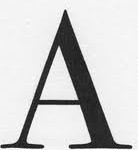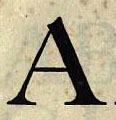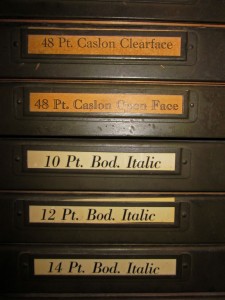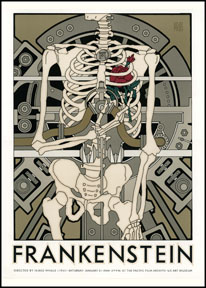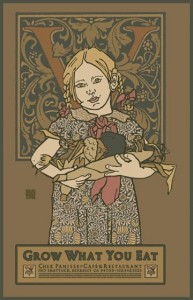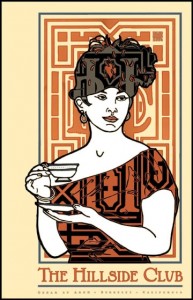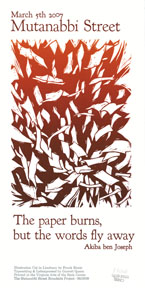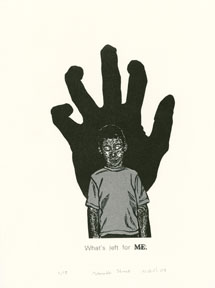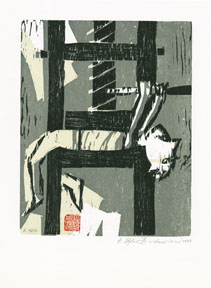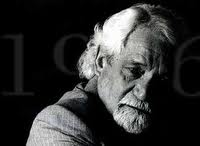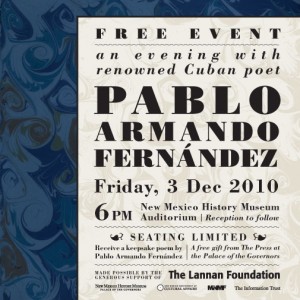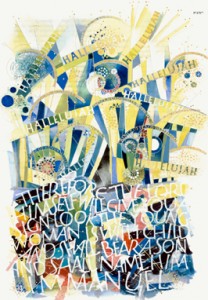 As the monks of Saint John’s Abbey might themselves say: Hallelujah!
As the monks of Saint John’s Abbey might themselves say: Hallelujah!
The popularity of Illuminating the Word: The Saint John’s Bible, combined with the delighted approval of the exhibition’s design from the monks of Saint John’s University, has led to an extension of the show’s run. Previously set to close on April 7, The Saint John’s Bible will now be on exhibit in the History Museum’s Herzstein Gallery until December 30, 2012.
“The installation of the folios in the New Mexico History Museum presents The Saint John’s Bible in one of the most beautiful and faith-filled exhibitions of this Bible done to date,” said Tim Ternes, director of The Saint John’s Bible. “The contemplative environment artfully shares the story, work and process of this monumental project in a setting that compels the guest to slow down, relax and reflect.
“Saint John’s is very pleased to be able to extend this exhibition in the Santa Fe area, a place where art, faith and culture have been harmoniously blended for centuries.”
Commissioned by the monks of Saint John’s Abbey and University in Collegeville, Minn., The Saint John’s Bible represents a remarkable achievement in the book arts. In 2000, Donald Jackson, senior scribe to Queen Elizabeth, and a crew of artists and calligraphers began the first of the Bible’s 1,150 vellum pages—from Genesis to Revelation. Last May, the project achieved completion when Jackson wrote the word “Amen” on the final page of the Book of Revelation. All of the pages will eventually be bound into seven volumes for use and exhibition at Saint John’s Abbey, but in the meantime, 44 pages from two of its Old Testament volumes–Prophets and Wisdom Books–are on exhibit at the New Mexico History Museum.
More than 26,600 people have come to the museum to see the Bible and take part in the activities and lectures that accompany it.
“Faith is part of the history of New Mexico, one that you can see in ancient petroglyphs, mission churches, Jewish temples, the Sikh community and more,” said Dr. Frances Levine, director of the History Museum. “Besides being part of the state’s history, faith is part of the history of the book, and this exhibit takes the book back to its medieval origins, when the Bible was `the first book.’ In Saint John’s, that first book meets modern technology, contemporary artists, and interpretations that blend modern-day events with centuries-old scripture.”
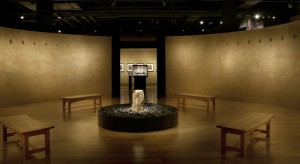 Tom Leech directs the Palace Press, a working exhibit that celebrates the book arts. He helped bring this contemporary masterpiece to Santa Fe to help visitors experience how profoundly beautiful and moving an illuminated manuscript can be.
Tom Leech directs the Palace Press, a working exhibit that celebrates the book arts. He helped bring this contemporary masterpiece to Santa Fe to help visitors experience how profoundly beautiful and moving an illuminated manuscript can be.
“The Saint John’s Bible is installed in a way that gives people a quiet, secular space to unplug and de-stress. The work speaks to us in many different ways,” Leech said. “We’ve even included a sort of meditation space in the center of the gallery where visitors can let what they’ve seen sink in.”
Also on exhibit in the gallery is Contemplative Landscape, featuring the work of photographers both past and present who have interpreted the ways that people of many faiths have found a home in New Mexico. (Find out more about Contemplative Landscape by clicking here.)
Accompanying the exhibits are lectures, performances and hands-on calligraphy workshops. We’ll be adding a few events with the extended run of The Saint John’s Bible, including talks by Tim Ternes. As soon as details are firmed up, we’ll let you know. All events are free and in the History Museum Auditorium, unless otherwise noted. The remaining schedule:
Saturday, February 25, 10 am-4 pm, NMHM Classroom: “Oh My Gouache,” calligraphy workshop by Diane von Arx, special treatment artist for The Saint John’s Bible. This event is sold out.
Sunday, February 26, 2 pm: “Special Treatment Illuminations for The Saint John’s Bible,” lecture by Diane von Arx.
Sunday, March 11, 2 pm: Schola Cantorum of Santa Fe and the monks of Christ in the Desert Monastery perform in the History Museum Lobby.
Sunday, March 25, 2 pm: “Endangered Texts: Preserving Ancient Books the Benedictine Way in the 21st Century,” lecture by Father Columba Stewart, executive director of the Hill Museum and Manuscript Library at St. John’s University in Minnesota.
Sunday, April 29, 2 pm: Contemplative Landscape photographers panel discussion; Kirk Gittings, Ed Ranney, Janet Russek, Sharon Stewart and Don Usner.
Friday, June 1, 6 pm: “Fragile Faith,” lecture by Contemplative Landscape photographer David Robin.
Friday, June 8, 6 pm: “Landscape and Memory,” lecture by artist and calligrapher Laurie Doctor.
Saturday and Sunday, June 9 & 10, 10 am-4 pm, NMHM Classroom: “Landscape and Lettering: Before the Separation of Drawing and Writing,” calligraphy workshop with Laurie Doctor. Cost is $200. Limited seating; call (505) 476-5096 to register.
Friday, July 13, 6 pm: “Poetry & Photographs,” discussion and poetry reading with Contemplative Landscape photographer Teresa Neptune and poet Miriam Sagan.
Sunday, October 14, 2 pm: “Ritualized Naming of the Landscape through Photography,” lecture by John Carter, photography curator at the Nebraska State Historical Society.
Sunday, November 4, 2 pm: Red as a Lotus: Letters to a Dead Trappist, poetry reading by Lisa Gill; and Compassion Rising, a film about Thomas Merton and the Dalai Lama.
Sunday, December 2, 2 pm: Sacred choral music by Schola Cantorum of Santa Fe and the monks of Christ in the Desert Monastery.

